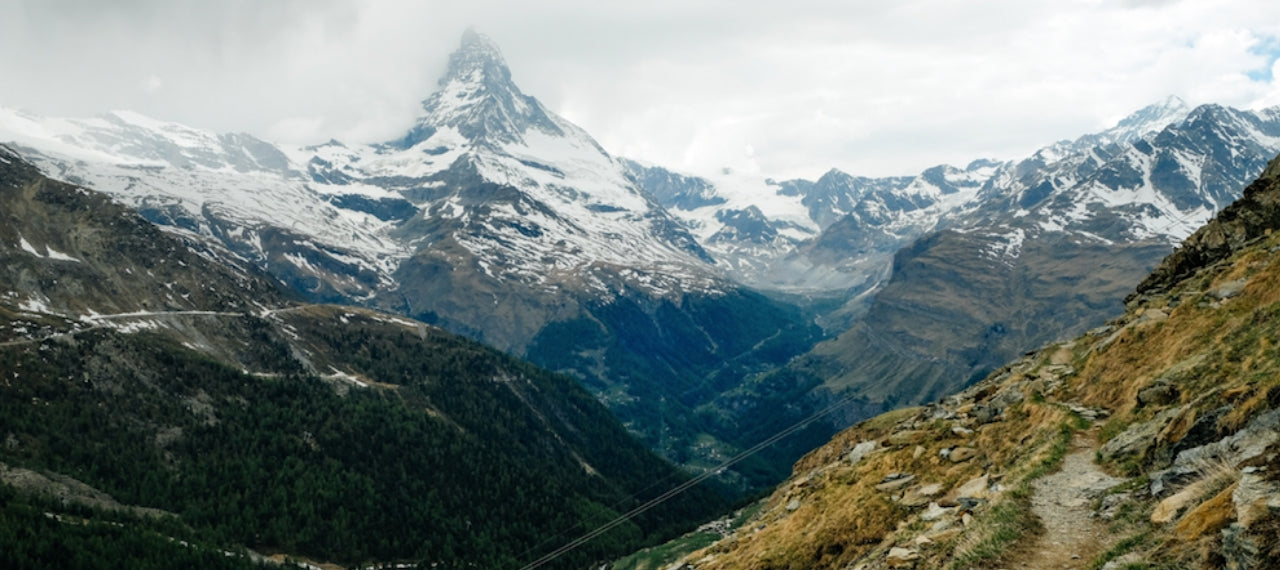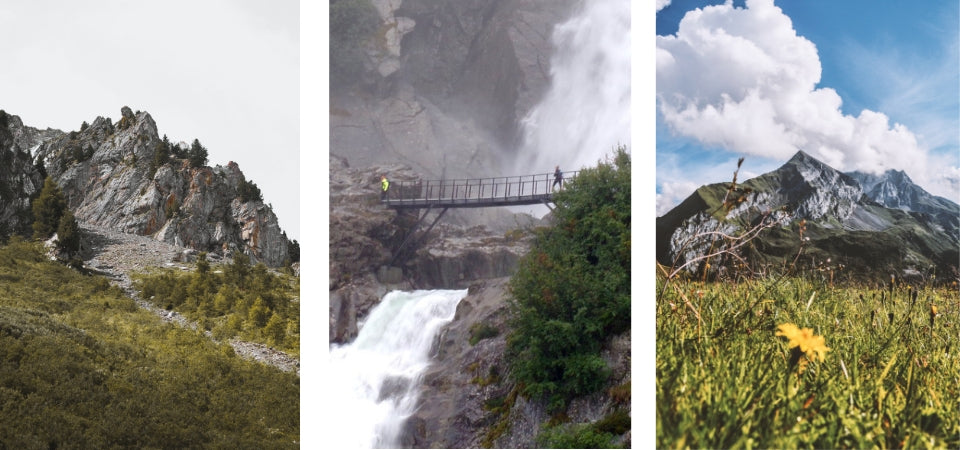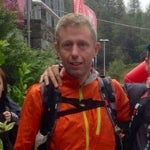
Facing Giants
Kingsley Jones, co-founder of Icicle Mountaineering, is a UIMLA International Mountain Leader. He is also an ultra trail runner, and a six-times finisher of the UTMB series. But it was the Tor des Géants — a 330km-long ultra trail race that makes a circuit of the Aosta valley of Italy, starting and ending in Courmayeur in the Mont Blanc massif, running through the Gran Paradiso, Monte Rosa and Matterhorn massifs — which nearly broke him. It profoundly changed his perspective of the mountains.
Even the name Tour of the Giants, the Tor des Géants, is belittling. It isn’t a story of one climb, but relentless climbs, days blurring with nights, and pushing the body to its limits, bringing on hallucinations with sleep deprivation. My running of the Tor drew on every bit of mountain skills and guiding experience I’ve acquired over the years. It drew me in, chewed me up, spat me out, and changed my perception of the mountains forever. Many describe ultra running as a very selfish sport, with the Tor its most extreme articulation, offering us ultra junkies a one-week continuous fix. Sure there are multi-day stage races, but there’s nothing continuous like the Tor.

Unlike climbing the likes of the Eiger, where you choose your weather window, train hard, and are on and off the climb quickly, on the Tor you are exposed to nearly a week in the mountains, ascending as high as 3500m. To complete the Tor is close to the same distance as running from Blackpool to London, with the equivalent of nearly seven ascents of Everest from Base Camp in between. You are dressed for ultra-running, not for climbing, which means you have to cope with what the weather throws at you, weather window or not. I was unlucky, with snow, ice and storms. It drew on every grain of mountain experience I had in six nights out, with a maximum running time of 150 hours. I pushed the envelope of safety, slithering and skating over icy rocks, running through storms, forging upwards in whiteout conditions.

The Tor makes a huge loop of the Aosta valley in northern Italy, and visits the four main mountain massifs that form its borders: the Mont Blanc, Gran Paradiso, Monte Rosa and Matterhorn. Nothing can prepare you properly for the variety of landscapes: huge plunging waterfalls, swaying bridges, Roman roads, wild flowers, and snow plastered mountain ranges. There’s history in these mountains, but tragedies, too, brought to mind when we ran past the memorial to Chinese runner Yuan Yang who died after he fell from a cliff in the 2013 Tor.

Right from the start, this race had a different atmosphere from many long distance running events, such as the UTMB. Instead of the usual start-line hype, it felt like a group of people who really knew what they were doing, meeting to get something done. Among the 800 runners, I don’t remember any overly energetic faces desperate for the off, but a determined and focused bunch. We realised quickly that we weren’t in a race against each other, but with ourselves surviving with tough conditions as we crossed mountain range after mountain range, days blurring with nights, with each life-base (aid station) over a marathon distance apart.
Normally aid stations are an opportunity to grab some essentials, and push on. Alain Desez, a friend and multiple times Tor finisher, told me not to hurry: his advice was to run slower than I planned to, and to minimise sleep each day to about 1.5 hours. The advice was perfect. Every time I felt I was pushing too hard, I throttled back. With every step, I focused on shortening the stride, and minimising the impact. Every pain I felt, I tried to adapt technique to use another part of my body to compensate or transition to. What makes you finish is to achieve the fine balance between listening to your body to gain efficiency and comfort, whilst not listening to the logical devils telling you to stop or that it hurts too much.
Once we reached Courmayeur, we all went back to the sports centre to collect our drop-bags. It looked like a war zone, with runners slumped in every corner. As I looked around the hall, in an instant I knew what the Tor was about. Some stared into the distance, others were crying, and a few made elated calls home to loved ones. Emotion was bare and raw at that moment, and it gave a brief insight into what we all had shared.
Now I understand why so many runners come back year after year to the Aosta valley. What the Tor makes you realise is how important other people are to your race. The volunteers who feed you and assist at aid stations, the shepherds and farmers ringing cowbells at their huts to cheer you on, the other runners offering help to those who slowed or stopped.

Being brutally honest, my previous experience in the mountains encouraged me to have a mentality of it being me against mountain. That’s how I approached my guiding too, choosing a route and getting it done. The Tor changed that significantly and taught me to think in a very different way. I learned that to really understand the mountains, you aren’t attacking them; you’re assessing every nuance, sound, smell, and feeling. Intuition plays a part, in a holistic experience which is about far more than just completing a route. I had to put trust in my training as an International Mountain Leader (IML) which equipped me better than anything else. When my physical and mental reserves were at their lowest ebb, base instincts kicked in from my guiding experience. Yet my experience also taught me more about the mountains than I’d learned in many years of training. The Tor taught me the true meaning of resilience and imparted a strong desire to share my skills with others in the future.
---

2019 marks the tenth anniversary of the Tor des Géants.
You can read more about Kingsley on his website or find out about Icicle Mountaineering on Instagram @iciclemountaineering.
For more about BAIML, visit the International Mountain Leaders website.

